 | |
 | |
| Industry | Manufacturing |
|---|---|
| Founded | 1898 (as a bicycle manufacturer) 1901 (first automobile) |
| Defunct | 1926 |
| Headquarters | , |
| Products | Automobiles |
Vinot-Deguingand was a French automobile producer. [1] [2] [3]
Contents

 | |
 | |
| Industry | Manufacturing |
|---|---|
| Founded | 1898 (as a bicycle manufacturer) 1901 (first automobile) |
| Defunct | 1926 |
| Headquarters | , |
| Products | Automobiles |
Vinot-Deguingand was a French automobile producer. [1] [2] [3]

In 1898 Lucien-Marie Vinot-Préfontaine (1858–1915) and Albert Deguingand (1872–1943) founded the business at Puteaux for the manufacture of bicycles. Motor car production began in 1901.
Sources vary about the format of the name - Vinot & Deguingand, Vinot-Deguingand [4] [5] or, from 1907, Vinot. [1]
In 1906 [2] or 1909 [4] Vinot acquired Gladiator and until 1920 two virtually identical ranges were offered with the Vinot and the Gladiator names. [4]
The company also owned a London based subsidiary called "Vinot Cars Ltd" which often provided for Vinots to have their bodywork fitted by locally based English coach-builders. [5] The early cars sold in England were sold under the name "La Silencieuse". [4]
After the war manufacturing activity was transferred to newly acquired premises at Nanterre on the west of Paris. However, production ended in 1926 in response to a falling away in customer demand. The factory was sold to Donnet-Zédel. It was later sold to Henri Pigozzi and became the principal production location for Simca-Fiat (subsequently Simca)
Lucien-Marie Vinot-Préfontaine having died in 1915, Albert Deguingand in 1927 founded another auto-maker, named Société des Nouveaux Ateliers A. Deguingand, which would last till 1929 or 1930.
The first car had a twin-cylinder 1500cc engine and chain drive. In 1903 the twin cylinder model was designated as the manufacturer's "10CV" model, and was joined by a four cylinder 3300cc "H14CV" and a "F18CV". The 5800cc "30CV" followed in 1905, joined in 1906 by the manufacturer's first six-cylinder car.
The range for 1908 comprised a "10/14CV" and a "16/24CV". A "24CV" with a 4-litre engine was added in 1910. The range in 1914 involved cars with engine sizes of 1700cc, 2100cc, 2600cc and 4200cc.
Less than a year following the outbreak of peace, in October 1919 the manufacturer took a stand at the 15th Paris Motor Show and exhibited the 12CV Vinot-Deguignand Type BO, which sat on a 3,030 mm (119.3 in) wheelbase and was powered by a 4-cylinder engine of 2603cc. [5]
A team from Vinot & Deguingand took part in the inaugural 1923 Le Mans 24 Hour race. The brothers Léon and Lucien Molon completed 77 laps in a 10HP Vinot & Deguingand Type BP. This total was 51 laps behind the race leader and sufficient for 26th place overall and 6th place in the 2.0 classification. [6] [7]
{{cite book}}: CS1 maint: location missing publisher (link)Marbais et Lasnier was a French manufacturer of automobiles.
Automobiles Stabilia was an automobile manufacturer based on the north side of Paris between 1906 and 1930. Although the name of the company changed a couple of times, the cars were branded with the Stabilia name throughout this period. The company specialised in lowered cars featuring a special patented type of suspension.
M.Tholomé was an automobile manufacturer based on the north side of Paris between 1919 and 1922, which produced cyclecars.

Société des Automobiles Pilain (SAP) was an automobile manufacturer based in Lyon between 1902 and 1920.
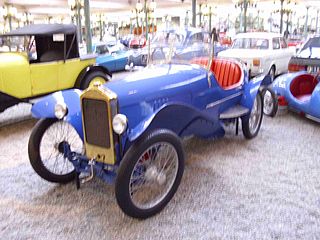
Sénéchal was a French automobile manufacturer between 1921 and 1929.
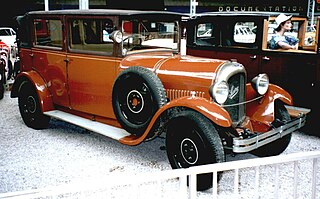
Automobiles J. Suère was a French manufacturer of automobiles between 1909 and 1931.

Sima Violet was a French manufacturer of cyclecars between 1924 and 1929.
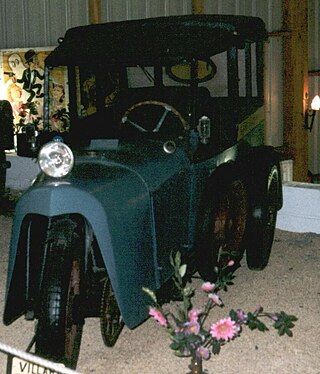
Villard was a French automobile manufacturer between 1925 and 1935.
The Tuar was a short-lived French automobile.
Zeiller & Fournier was a short-lived French automobile producer.
Société des Nouveaux Ateliers A. Deguingand was a short-lived French automobile manufacturer.
Raymond Siran, Cyclecars D'Yrsan was a French manufacturer of automobiles in the cyclecar class.

Majola was a French producer of engines and automobiles, established in 1908 and producing automobiles from 1911 till 1928.

Louis Chenard was a French producer of automobiles, making cars at Colombes, near Paris from 1920 till 1932. Louis Chenard was always a relatively low volume manufacturer. Engines were bought in, mostly from Chapuis-Dornier.
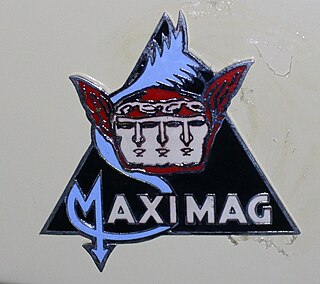
Maximag was the name of a Swiss automobile, produced by Motosacoche, based at Carouge, a suburb of Geneva, from 1923 till 1928.

Messier was a French automobile manufacturer, based at Montrouge, on the southern edge of Paris, from 1925 till 1931.

Établissements Monotrace S.A. was a French automobile manufacturer, based at Courbevoie, on the edge of Paris, from 1924 till 1930. Although it was presented as a type of automobile, the Monotrace was in some respects more like a motor cycle than a conventional motor car.
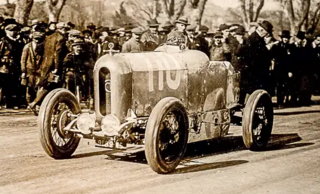
Octo was a French automobile manufactured at Courbevoie by Louis Vienne between 1921 and 1928.
Chapuis-Dornier was a French manufacturer of proprietary engines for automobiles from 1904 to 1928 in Puteaux near Paris. Between 1919 and 1921 it displayed a prototype automobile, but it was never volume produced.
Voiturettes Automobiles A.S. was a sports automobile manufacturer company based in Courbevoie, and later in La Garenne-Colombes, in France. It was established in 1919 by Lucien Jeannin, and existed until 1928.